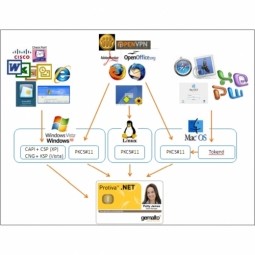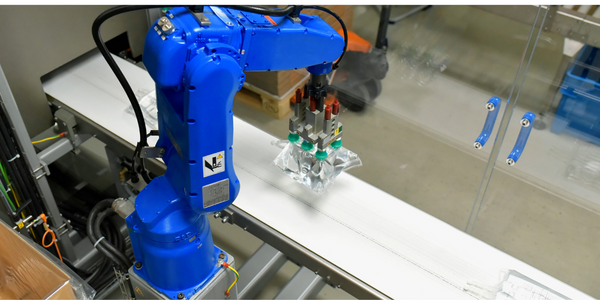Customer Company Size
Large Corporate
Region
- Asia
Country
- China
Product
- IBM® Aspera® Connect Server
- IBM® Aspera® Connect browser plug-in
- IBM® Aspera® Console
- IBM® Aspera® Cargo
Tech Stack
- IBM Aspera
Implementation Scale
- Enterprise-wide Deployment
Impact Metrics
- Productivity Improvements
- Digital Expertise
Technology Category
- Application Infrastructure & Middleware - Data Exchange & Integration
Applicable Industries
- Life Sciences
Applicable Functions
- Product Research & Development
Services
- Data Science Services
About The Customer
GigaScience is an online open-access, open-data life sciences journal, co-published by BGI and BioMed Central. The journal publishes 'big-data' articles covering the full spectrum of biological and biomedical sciences, including fields based on difficult-to-access data such as imaging studies, neuroscience, and systems biology. All of the manuscripts that are accepted and published in the journal focus on the use, analysis, or tool-development for large-scale data sets. GigaScience set out to provide a solution to the problem of reproducibility of data-heavy scientific studies. With a goal of making research reproducible and reusable, research articles transparent, and large-scale data easily accessible and citable, GigaScience hosts the complete data sets associated with each published article in a comprehensive public database, GigaDB. It further provides each dataset with a 'digital object identifier,' which makes it easier for people to locate the files they are looking for and also provides the means for people to directly cite the data when reusing or reproducing research.
The Challenge
GigaScience, an online open-access, open-data life sciences journal, publishes 'big-data' articles covering a wide range of biological and biomedical sciences. The journal hosts the complete data sets associated with each published article in a comprehensive public database, GigaDB. However, the data sets submitted in support of articles published in the GigaScience journal can reach multiple terabytes in size. GigaScience found that FTP was not suitable for moving large files because transfers were often exceedingly slow, and if a user encountered a network problem, the transfer would have to be restarted from the beginning. Plus, transfers over long distances were particularly time-consuming and unreliable due to the high latency on the network. On one occasion, GigaScience was presented with the challenge of uploading a 15 TB liver-cancer data set. Ruling out FTP, GigaScience had to load the data onto 8 hard drives and physically transport it from the submitter to the journal, a costly and time-intensive process.
The Solution
To handle the transfer of such enormous datasets, GigaScience adopted a suite of IBM Aspera software products to provide authors, reviewers, and other users with the tools to upload and download all the large data sets that accompany manuscripts at maximum speed. GigaScience selected IBM® Aspera® Connect Server to rapidly transfer all the data sets that accompanied submitted manuscripts to the GigaScience database and IBM® Aspera® Console to manage and monitor the entire end-to-end transfer process. Authors use Aspera’s free downloadable Aspera Connect plug-in to submit manuscript-associated data sets to a private data storage site at GigaScience. Staff reviewers then access the files, using the browser plug-in to download and upload files at high-speed. If a paper is accepted for publishing, the data is then transferred to the journal’s public database, GigaDB, via Aspera, where it is readily available for journal readers to view and download, again using the Aspera Connect plug-in.
Operational Impact
Quantitative Benefit

Case Study missing?
Start adding your own!
Register with your work email and create a new case study profile for your business.
Related Case Studies.

Case Study
Corporate Identity Solution Adds Convenience to Beckman Coulter
Beckman Coulter wanted to implement a single factor solution for physical and remote logical access to corporate network. Bechman Coulter's users were carrying smart card badges for doors, but also needed a one-time password token to access to our corporate network when they were not in the office. They wanted to simplify the process.

Case Study
Embracing Business Success in Real Time
· Increase control over growing Big Data to improve business decisions · Manage data for 28,000 biotechnology stockkeeping units in the fields of microbiology, molecular biology, animal cell cultures, plant tissue cultures, and lab ware for laboratory chemicals · Accelerate report generation and analysis with real-time data

Case Study
Flow Robotics: Scaling Up Production and Accelerating Product Development with IoT
Flow Robotics, a Danish manufacturer, developed flowbot™ ONE pipetting robots to alleviate the strain on bioanalysts in life-science laboratories and hospitals across Europe. These robots were designed to automate part of the testing process, speeding up the time it takes to produce results and reducing pressure on staff. However, the company faced challenges in scaling up production and accelerating product development. High workloads and physically challenging conditions have long been an issue for laboratory professionals. Flow Robotics estimates that around half of medical lab technicians carry out the same arm movements for at least a quarter of their working day. The American Society for Clinical Pathology reported that 85% of laboratory professionals feel burnt out; 36% struggle with inadequate staffing; and 32% face a heavy workload and pressure to complete all testing on time.

Case Study
Revolutionizing Aerospace Industry with 3D Printing: A 63% Lighter Titanium Part
GE Aviation, a renowned name in the aerospace industry, recognized the potential of 3D printing technology in transforming the sector. The primary challenge was to reduce the weight of the aerospace parts, which would directly impact the fuel costs. A lighter airplane would mean lower fuel consumption, leading to cost savings and a smaller carbon footprint. However, achieving this weight reduction without compromising the strength and functionality of the parts was a significant challenge. Traditional manufacturing methods were not able to provide the desired weight reduction while maintaining the required stiffness and strength of the parts. The challenge was to find a solution that could create strong, light, and functional aerospace parts.
Case Study
Material Intelligence at Ethicon: Sustaining Medical Device Manufacturability and Improving Patient Care
Ethicon, a world-class medical devices company, faced several challenges in its operations. The rapid selection of manufacturing materials compliant in global markets was critical to assure patients, practitioners, and purchasing organizations of the biocompatibility of their medical devices. Ensuring supply chain continuity and minimizing risks of obsolescence for medical devices due to regulatory changes were also crucial in meeting Ethicon’s ongoing commitment to maintaining patient care. Furthermore, the engineers at Ethicon were developing the next generation of medical devices and needed to access historical material data to accelerate new product development. The process of centralizing and digitalizing its materials information was a significant challenge that Ethicon needed to overcome.
Case Study
IWT's Transformation: Customizing with Efficiency in IoT
IWT, a company specializing in the design, manufacture, and installation of washing systems for the life sciences and pharmaceutical industries, faced a significant challenge in managing its wide product portfolio. The company manufactures 45 different models, 60% of which are customized to some degree. This high level of customization, combined with limited production quantities, necessitated a controlled process for managing the release of engineering changes. The goal was to achieve efficiency, reduce process time, and better coordinate production throughout the organization. The need for strict compliance in heavily regulated industries further complicated the situation. IWT's existing PLM journey with Dassault Systèmes’ SOLIDWORKS for 3D CAD and Enovia for managing CAD data and Bills of Materials (BOMs) was proving inadequate. The system had limited part classification, no workflow, and no tool to ensure data consistency. The management of non-CAD documents was also a challenge, with information often difficult to find and access.



